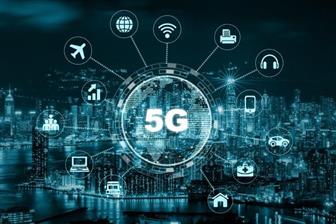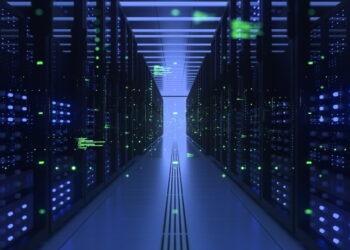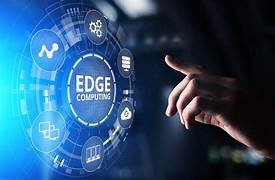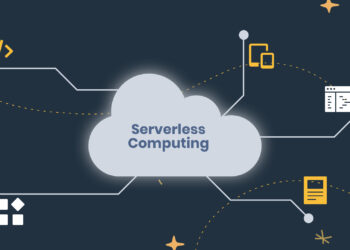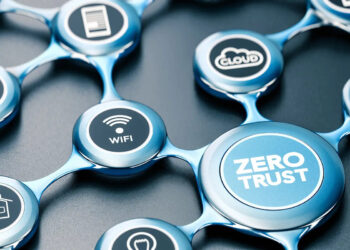In the sprawling digital landscape of the 21st century, two transformative technologies have emerged not as competitors, but as powerful allies destined to redefine our interaction with the digital world: 5G and edge computing. On its own, 5G is more than just a speed bump over its 4G predecessor; it represents a fundamental rethinking of wireless communication. Similarly, edge computing is a paradigm shift, moving computational power away from centralized data centers and closer to where data is generated. However, when combined, they create a synergy so potent that it unlocks possibilities previously confined to science fiction. 5G is not merely a contributing factor to the rise of edge computing; it is the essential fuel, the high-octane catalyst making its widespread, meaningful deployment a present-day reality.
This article delves into the intricate and powerful relationship between these two technological titans. We will explore the core components of both 5G and edge computing, dissect precisely how 5G’s unique attributes supercharge edge capabilities, and journey through a gallery of real-world applications that are already changing industries. From a surgeon performing a remote operation to a smart city managing traffic flow in real-time, the partnership between 5G and the edge is the silent engine driving the next wave of innovation. We will also navigate the challenges that lie on the path to full-scale adoption and look ahead to the future this powerful duo is building.
Understanding the Dynamic Duo: 5G and Edge Computing
To appreciate the revolution, one must first understand the revolutionaries. While often mentioned in the same breath, 5G and edge computing are distinct technologies that solve different, yet complementary, problems. Their convergence is a classic case of the whole being greater than the sum of its parts.
A Deeper Look at 5G: Beyond Faster Speeds
The marketing of 5G has often focused on a single metric: speed. While it certainly delivers on that promise, allowing you to download a full-length movie in seconds, its true power lies in a triad of capabilities that were designed to serve the machine-to-machine economy, not just human consumers.
A. Enhanced Mobile Broadband (eMBB): This is the capability most familiar to consumers. eMBB provides massive bandwidth and high data transfer rates, significantly improving upon 4G LTE. This is crucial for data-heavy applications like streaming ultra-high-definition video, but in the context of the edge, it’s about providing a fat pipe to carry the immense volumes of data generated by sensors, cameras, and other IoT devices to a nearby edge node for processing.
B. Ultra-Reliable Low-Latency Communication (URLLC): This is arguably the most revolutionary aspect of 5G and the most critical for edge computing. Latency is the delay between a command being sent and a response being received. For many applications, this delay, measured in milliseconds (ms), is the difference between success and failure. While 4G networks have a latency of around 50-100 ms, 5G, with URLLC, aims for a latency of under 1 ms. This near-instantaneous communication is essential for applications requiring real-time control and feedback, such as autonomous vehicles, factory robotics, and remote surgery.
C. Massive Machine-Type Communications (mMTC): The Internet of Things (IoT) envisions a world with billions of interconnected devices. Previous network generations were not designed to handle this density. mMTC is specifically engineered to support up to one million connected devices per square kilometer. This allows for the deployment of massive sensor networks in smart cities, smart agriculture, and industrial environments, all of which rely on edge computing to process the torrent of data they produce.
Demystifying Edge Computing: The Decentralized Approach
For decades, the dominant model of computing has been centralized. Data is created on a local device (a phone, a PC, a sensor) and sent over the internet to a massive, distant cloud data center for processing. The result is then sent back. Edge computing flips this model on its head.
It is a distributed computing paradigm that brings computation and data storage closer to the sources of data. Instead of a long round trip to the cloud, data is processed “at the edge” of the network. This “edge” can take several forms:
- Device Edge: Computation happens directly on the device itself (e.g., a smart camera with an AI chip).
- On-Premise Edge: A small server or cluster of servers is located on-site, such as in a factory, hospital, or retail store.
- Network Edge: A data center is placed within or at the edge of the telecommunications network, such as at the base of a cell tower. This is often called Multi-Access Edge Computing (MEC).
The primary motivation for moving to the edge is to overcome the limitations of the centralized cloud, namely latency and bandwidth costs. Sending every piece of data to the cloud is slow and expensive. By processing data locally, edge computing enables faster response times, reduces internet bandwidth consumption, and enhances data privacy and security by keeping sensitive information within a local network boundary.
The Synergy: How 5G Specifically Fuels Edge Deployment
Edge computing existed as a concept before 5G, but it was hobbled by the limitations of 4G and wired connections. It was a powerful engine without a suitable racetrack. 5G provides that racetrack, and its specific features directly address the historical barriers to edge deployment, creating a perfect symbiotic relationship.
A. Unleashing Real-Time Processing with URLLC: The dream of real-time intelligent systems hinges on eliminating delay. Consider an autonomous vehicle’s navigation system. It must analyze data from LiDAR, radar, and cameras to make split-second decisions. Sending this data to a distant cloud for analysis introduces a fatal latency. With a 5G connection to a roadside edge server, the processing loop (data collection, analysis, and action) can occur in milliseconds. URLLC guarantees that the communication link is not just fast, but also incredibly reliable, which is non-negotiable for mission-critical applications like public safety drones or robotic arms on an assembly line. 5G’s low latency allows the “brain” of the operation to sit on the edge, not on the device itself, enabling more powerful processing while keeping the device light and energy-efficient.
B. Handling the Data Deluge with eMBB: Smart environments are data factories. A single high-definition security camera can generate terabytes of data per month. A modern factory floor is covered in sensors monitoring temperature, vibration, and output. Transmitting all this raw data to a central cloud over a 4G connection would quickly saturate the network. 5G’s eMBB provides the massive bandwidth needed to offload this data deluge to the local edge node. This allows for sophisticated, real-time analysis at the edge. For example, multiple video streams from a retail store can be analyzed by an AI on an on-premise edge server to detect shoplifting or manage checkout queues instantly, without clogging the store’s primary internet connection.
C. Connecting the Masses with mMTC: A key promise of edge computing is to derive insights from vast networks of small, low-power IoT devices. Think of a smart farm with thousands of soil sensors monitoring moisture and nutrient levels, or a smart city with sensors on every streetlight, parking meter, and waste bin. 4G networks would buckle under the strain of connecting so many devices in a dense area. 5G’s mMTC is designed specifically for this scenario, efficiently managing connections for a massive number of devices that may only need to transmit small packets of data intermittently. This capability makes large-scale, sensor-driven edge applications economically and technically feasible for the first time.
D. Network Slicing: The Custom-Tailored Enabler: Perhaps one of the most sophisticated enablers is 5G network slicing. This technology allows mobile operators to carve out multiple virtual, end-to-end networks on top of a single physical infrastructure. Each “slice” can be tailored with specific characteristics. For an edge computing application, an operator could create a dedicated slice with guaranteed URLLC and high bandwidth for a hospital’s remote surgery and diagnostic equipment. Simultaneously, on the same physical network, another slice could provide standard eMBB for patients and visitors Browse the web, and a third mMTC slice could handle the thousands of low-power patient monitoring sensors throughout the facility. This ability to provide a guaranteed Quality of Service (QoS) for specific edge applications is a game-changer that ensures performance and reliability.
Real-World Applications and Use Cases in Action

The theoretical synergy between 5G and edge computing comes to life in a rapidly expanding portfolio of real-world applications. These aren’t future concepts; they are being deployed today, transforming the fabric of industry and daily life.
A. Industrial IoT (IIoT) and Manufacturing 4.0: Factories and industrial sites are becoming showcases for the 5G-edge partnership. On a factory floor, 5G connects everything from robotic arms to automated guided vehicles (AGVs). Edge servers located within the factory process sensor data to enable predictive maintenance, identifying when a machine is likely to fail before it happens. They run computer vision applications that scan products for defects in real-time, far faster than a human eye could. The low latency of 5G ensures that if a hazard is detected, all machines in the area can be stopped instantly, dramatically improving worker safety.
B. Smart Cities and Intelligent Transportation: The vision of a truly smart city relies on instantaneous data processing. 5G-connected traffic lights can communicate with each other and with an edge node to optimize traffic flow, reduce congestion, and give priority to emergency vehicles. Smart parking sensors guide drivers to empty spots, while connected waste bins signal sanitation crews when they are full. Public safety is enhanced with high-definition cameras that can perform real-time threat detection, with analysis happening on a local edge server to ensure privacy and immediate response without overwhelming the city’s network.
C. Healthcare and Remote Medicine: Healthcare is being revolutionized by the ability to move expertise and diagnostics to the patient, wherever they may be. Ambulances equipped with 5G can transmit high-definition video and patient vitals to a hospital in real-time. Doctors, aided by data processed at the network edge, can provide critical instructions to paramedics en route. This combination also enables telesurgery, where a specialist surgeon in one city can control a robotic arm to operate on a patient in a rural area, with 5G’s URLLC providing the necessary precision and responsiveness.
D. Immersive Entertainment: AR and VR: Augmented Reality (AR) and Virtual Reality (VR) have been held back by bulky, expensive headsets and the nausea-inducing effects of lag. The 5G and edge combination solves this. By offloading the heavy graphics rendering from the headset to a powerful edge server, headsets can become lighter, cheaper, and more power-efficient. 5G provides the high-bandwidth, low-latency connection needed to stream the rendered frames back to the user’s eyes seamlessly. This enables lag-free cloud gaming, immersive AR shopping experiences where you can “try on” clothes virtually, and collaborative VR meetings that feel truly present.
E. Retail and Customer Experience: Brick-and-mortar retailers are using 5G and edge to fight back against e-commerce giants. On-premise edge servers can power “Just Walk Out” technology, using cameras and sensors to track what shoppers take and automatically charge their accounts. This same system can provide real-time inventory tracking and analytics on customer behavior within the store, allowing for dynamic pricing and personalized promotions sent directly to a shopper’s phone as they browse.
Overcoming the Hurdles: Challenges in Deployment
Despite the immense promise, the road to a world fully powered by 5G and edge computing is not without its obstacles. Deploying this new infrastructure is a complex and capital-intensive endeavor that faces several key challenges.
A. Infrastructure Investment and Cost: Building out a dense 5G network with the necessary small cells and deploying thousands of edge data centers requires a massive upfront investment from telecom operators and enterprises. The return on this investment must be justified by clear business cases and widespread adoption of the new applications it enables.
B. Security and Privacy: The distributed nature of edge computing significantly expands the potential attack surface for cyber threats. Instead of securing one central cloud, organizations must secure hundreds or thousands of edge nodes. Furthermore, the collection and analysis of vast amounts of data at the edge, from video feeds to personal health information, raise significant privacy concerns that must be addressed through robust encryption, access control, and transparent data policies.
C. Interoperability and Standardization: The ecosystem is filled with a multitude of hardware vendors, software platforms, and cloud providers. A lack of common standards can lead to vendor lock-in and interoperability issues, making it difficult to create seamless solutions that work across different networks and hardware. Harmonizing standards for both 5G interfaces and edge computing platforms is crucial for mass adoption.
D. Regulatory and Spectrum Hurdles: The deployment of 5G requires access to a significant amount of radio frequency spectrum, which is a finite resource allocated by governments. Furthermore, the physical placement of thousands of new small cells and edge servers can run into local zoning laws and regulatory roadblocks, slowing down deployment.
The Dawn of a New Computing Era
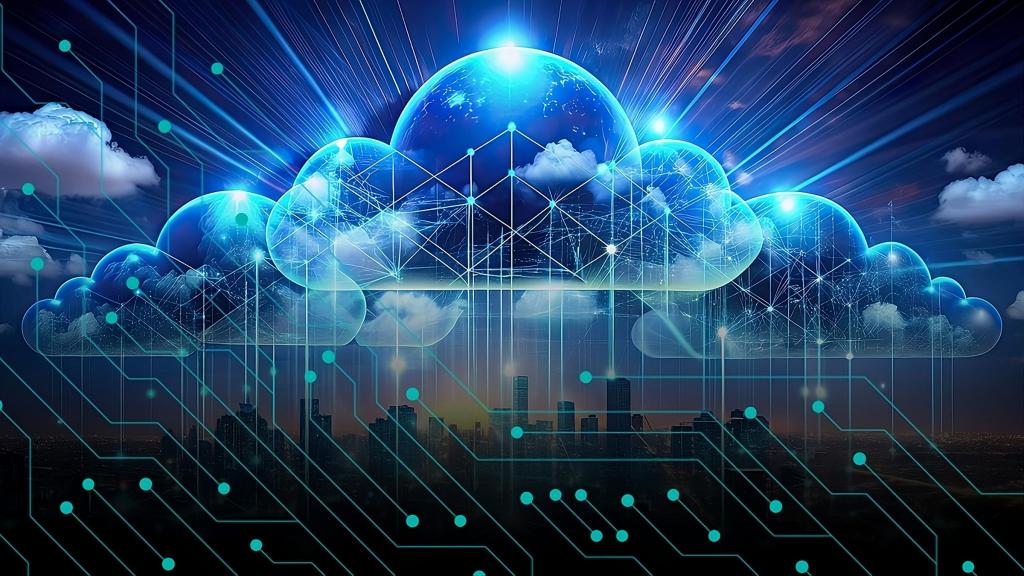
The relationship between 5G and edge computing is not one of simple convenience; it is a profound and necessary partnership. 5G, with its trifecta of high bandwidth, low latency, and massive connectivity, acts as the central nervous system for a new, decentralized computing model. Edge computing, in turn, provides the localized intelligence and processing power to make sense of the data that 5G networks carry, turning information into immediate, actionable insights.
Together, they are dismantling the limitations of the centralized cloud, paving the way for a more responsive, efficient, and intelligent world. From the factory floor to the city streets, and from the operating room to our living rooms, this dynamic duo is the catalyst for a technological revolution. While challenges in investment, security, and regulation remain, the momentum is undeniable. We are standing at the dawn of a new computing era, an era built on the edge and fueled by the unprecedented power of 5G.

